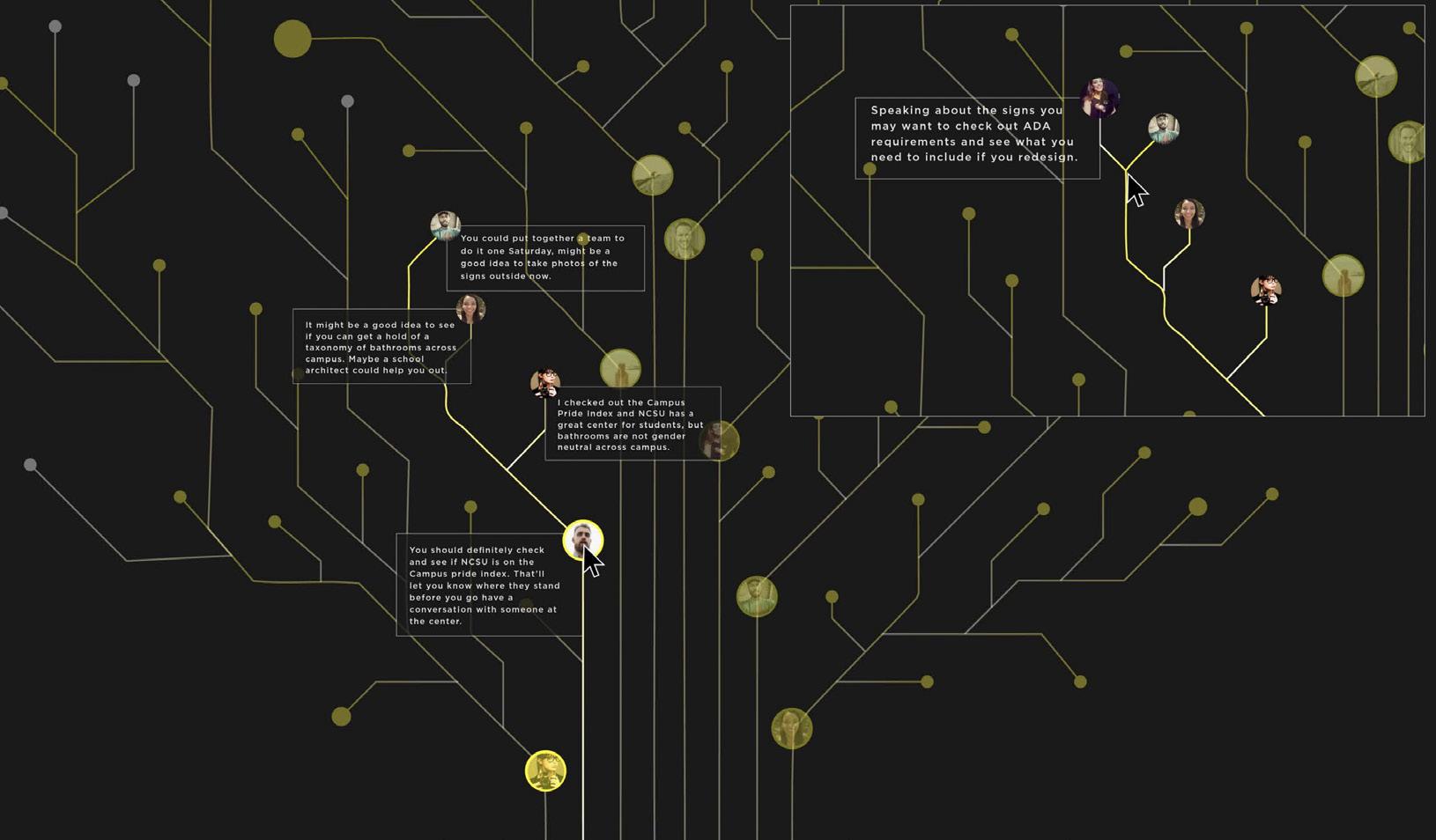
1 minute read
Working with Imagery: Mediating Image Rescripting
How can a digital therapy tool challenge negative automatic thoughts for undergraduate students experiencing anxiety in order to achieve more balanced thinking in daily planning and goal setting?
Ashley Anderson MGXD 2020
An estimated 32% of adults in the United States experience an anxiety disorder at some point in their lives, according to the National Institute of Mental Health. Though a large segment of the population is affected by anxiety, many lack access to treatment and coping resources. Traditional treatments for anxiety can be costly and time-consuming. In addition to such logistical barriers, enduring stigmas around mental illness discourage individuals from seeking treatment. Although efforts to expand therapy resources into a digital space have made some therapies more accessible, many fail to take advantage of mobile digital device affordances. Such devices make it easy to create and manipulate media and suggest opportunities beyond converting existing interventions to static device screens. This investigation applies cognitive behavioral therapy, which aims to help people with anxiety to challenge their unelpful patters of thought and behavior. It proposes a digital therapy tool that interupts negative automatic thoughts related to planning and goal setting. Drawing from imagery-based interventions used in cognitive behavioral therapy, this approach combines imagery change techniques with multi-modal digital storytelling to develop visual strategies for eliciting, reframing, and transforming mental imagery.
Altered
Paced prompts inside a multi-modal image builder guide the user. Floating toolbars allow users to select and manipulate pre-designed elements as they visualize scenarios and internal dialogue.












